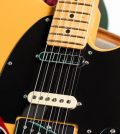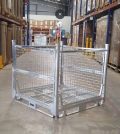The Most Popular Printing Surface Materials for High and Low Temperature Printing

Picture this: you just got your first 3D printer, you’re beyond excited to print your first model, but right as you start, things go off the rails. The first layer your printer prints out doesn’t adhere to the surface of your print bed properly, and as a result, it starts sliding or moving. And when your first layer isn’t stable, every subsequent one will also deform or move, and you will end up with a heinous creation that resembles a bog monster and not the Batman figure you intended to print in the first place.
So what caused all of this? Most likely, it was the printing surface, which is one of the most essential things to consider when printing. The most popular type of printing surface is the build plate tape, also known as the blue tape. The blue tape surface can be found in local hardware stores or online. It’s relatively inexpensive, and you can use it for as much as 20 prints before it wears down.
Additionally, the blue build plate tape gives your printing surface more adhesion, which is especially important if you’re using a lower print temperature material like PLA. Plus, this tape isn’t messy, works just fine, and it is easy to remove once you’re done with it. It can easily be placed and replaced over and over to ensure it lies evenly without any tight seams and bubbles between rows.
However, blue printing tape also has some disadvantages. For instance, the seams between the rows will be slightly raised no matter how carefully you handle it, which will impact the bottom of your print, and that’s something that can create a problem. On the other hand, if you’re printing materials that have high printing temperature, such as ABS, you’ll probably be better off with Kapton tape. This tape was invented by NASA to be used in space. It’s a film-like, super thin material that has strong heat-resistant properties.
Kapton tape can be difficult to remove and reapply, but many people go around this issue by having a 1.5mm piece of window glass cut to the size of the printing bed. The Kapton tape can be applied to the glass using a water method and then attaching the Kapton coated glass to the bed using adhesive or clamps. When doing so, ensure the building’s surface is level.
There are other types of printing surface materials available, but the aforementioned two are the most popular ones for printing with high and low-temperature materials.






